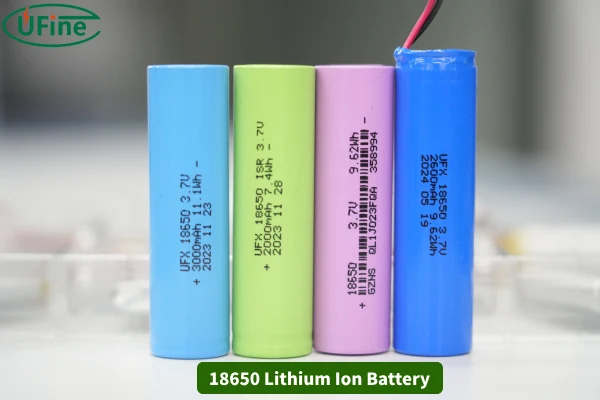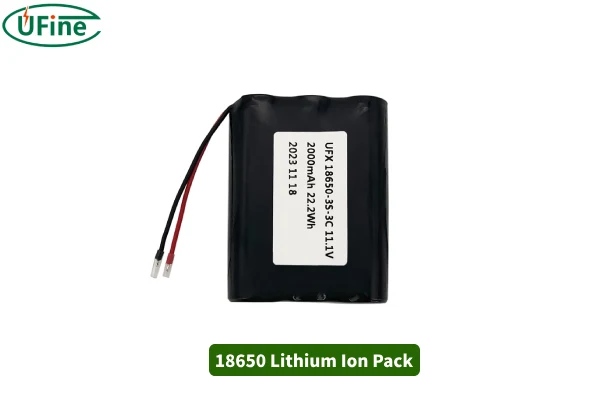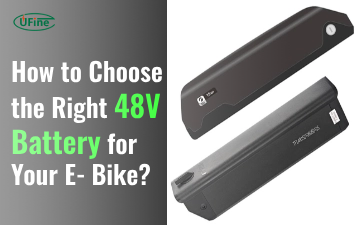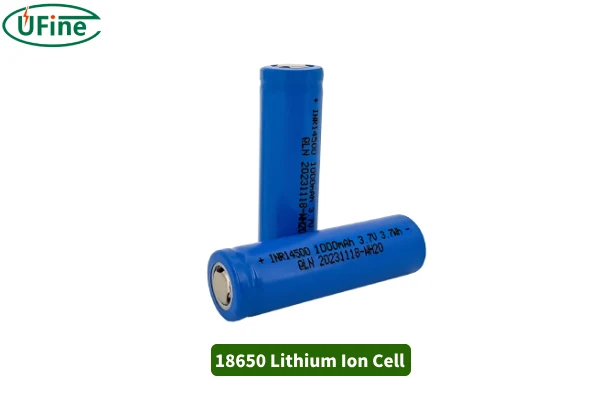If you’ve ever used a high-powered flashlight, a laptop, or even an electric vehicle, chances are you’ve encountered a 18650 lithium ion battery. These batteries are incredibly popular because they pack a punch in terms of energy density, have a long lifespan, and, best of all, are rechargeable. In this comprehensive guide, we’ll dive deep into everything you need to know about 18650 lithium ion batteries. We’ll cover their voltage, capacity, price, brands, and much more. So, whether you’re a tech enthusiast or just curious, stick around because we’re about to get battery-savvy!

Part 1. Voltage
Let’s kick things off with voltage. When we talk about the voltage of a 18650 lithium ion battery, we’re referring to the electric potential it provides. Typically, an 18650 battery has a voltage of 3.7 volts. This is quite a bit higher than many standard batteries, like AA batteries, which usually clock in at 1.5 volts.
Why does this matter? Well, the higher voltage means more power, which is why 18650 batteries are a favorite for high-drain devices like flashlights, laptops, and even electric vehicles. Imagine you’re using a high-powered flashlight; the 18650 battery’s 3.7 volts ensure that the light burns brightly and consistently for a longer period.
Part 2. Capacity
Next up, let’s talk about capacity. The capacity of a 18650 lithium ion battery is measured in milliampere-hours (mAh). This indicates how much energy the battery can store. Generally, the capacity of these batteries ranges from 100mAh to 3500mAh.
So, what does this mean in practical terms? A higher capacity means the battery can store more energy and, consequently, power your devices for a longer time before needing a recharge. For example, a battery with a capacity of 3000mAh will last longer than one with 2000mAh. This is particularly important if you’re using the battery in a device like a laptop or an electric bike, where you need extended runtime without frequent recharges.
Part 3. Price
Now, let’s discuss the cost. The price of 18650 lithium ion batteries can vary based on several factors, including the brand, capacity, and whether you’re buying single cells or packs. On average, you can expect to pay between $5 to $15 per battery.
Higher capacity batteries or those from well-known brands tend to be on the pricier side. However, considering their longevity and the fact that they are rechargeable, they offer great value for money in the long run. It’s like investing in a quality product that saves you from buying disposable batteries over and over again.
Part 4. Who makes the best 18650 batteries?
When it comes to brands, there are several reputable manufacturers of 18650 lithium ion batteries. Some of the well-known brands include:
- Samsung: Known for their high-quality and reliable batteries. Samsung 18650 batteries are often used in electric vehicles and other high-drain applications.
- LG: Offers a range of batteries with different capacities and performance levels. LG batteries are popular in laptops and power tools.
- Panasonic: Trusted for their durable and long-lasting batteries. Panasonic batteries are frequently found in high-end flashlights and medical devices.
- Sony: Another reliable brand with a variety of options. Sony batteries are often used in consumer electronics.
- Ufine Battery: A famous lithium battery customization manufacturer in China, Ufine Battery is known for producing high-quality and tailored lithium batteries. They offer customized solutions for various applications, making them a go-to for specialized needs.
Each of these brands offers various models, allowing you to choose the one that best fits your needs. Whether you need a battery for a flashlight, laptop, or electric bike, there’s a brand and model out there for you.
Part 5. 18650 lithium ion cell vs. 18650 lithium ion pack
You might come across terms like “18650 cell” and “18650 pack.” So, what’s the difference?
18650 Lithium Ion Cell
This is a single 18650 battery. It’s a standalone unit that can be used individually. Think of it as a single AA battery that you might use in a remote control.
This is a collection of 18650 cells connected together to form a larger battery pack. These packs can provide more voltage or capacity, depending on how the cells are arranged. For instance, an 18650 battery pack might be used in electric bikes, laptops, or power tools where more power is needed.

Imagine you’re building a battery pack for an electric bike. You wouldn’t just use one 18650 cell; you’d use a pack of them to ensure you have enough power and capacity to travel long distances. The cells are arranged in a specific configuration to achieve the desired voltage and capacity.
Part 6. AA lithium battery vs. 18650 lithium ion batteries
Now, let’s compare AA lithium batteries and 18650 lithium ion batteries. This is a common point of confusion, but the differences are quite significant.
- Size: AA batteries are smaller in size compared to 18650 batteries. Think of AA batteries as the go-to for everyday household items like remote controls and clocks.
- Voltage: AA batteries typically have a voltage of 1.5V, while 18650 batteries have a higher voltage of 3.7V. This higher voltage is crucial for devices that require more power.
- Capacity: 18650 batteries generally have a higher capacity, ranging from 100mAh to 3500mAh, compared to AA batteries. This means they can store more energy and power devices for longer periods.
- Rechargeability: Most AA lithium batteries are not rechargeable, whereas 18650 lithium ion batteries are. This makes 18650 batteries more cost-effective and environmentally friendly in the long run.
- In summary, while AA batteries are great for low-drain devices like clocks and remote controls, 18650 batteries are better suited for high-drain devices that need more power and longer battery life.
Part 7. Are all 18650 batteries lithium-ion?
You might be wondering if all 18650 batteries are lithium-ion. The answer is yes. The term “18650” refers to the battery’s size and shape, but they are all lithium-ion by chemistry. This means they offer high energy density, long cycle life, and are rechargeable. So, whenever you see an 18650 battery, you can be sure it’s a lithium-ion battery designed to provide reliable and long-lasting power.
Part 8. Is the 18650 lithium ion battery rechargeable?
Absolutely! One of the biggest advantages of 18650 lithium ion batteries is that they are rechargeable. This makes them a cost-effective and environmentally friendly option. You can recharge these batteries hundreds of times before they need to be replaced, reducing the number of disposable batteries you use.
For instance, if you have a high-powered flashlight that uses 18650 batteries, you can recharge the batteries whenever they run low instead of constantly buying new ones. This not only saves money but also reduces waste, making it a win-win situation.
Part 9. How long will a 18650 lithium ion battery last?
So, how long can you expect a 18650 lithium-ion battery to last? The lifespan of these batteries depends on several factors, including how often they are used and charged. On average, an 18650 lithium-ion battery can last between 300 to 500 charge cycles. This means you can recharge the battery 300 to 500 times before its capacity starts to degrade significantly.
To maximize the lifespan of your 18650 batteries, follow these tips:
- Avoid Overcharging: Use a charger with overcharge protection. Overcharging can reduce the battery’s lifespan.
- Proper Storage: Store your batteries in a cool, dry place when not in use. Extreme temperatures can damage the battery.
- Regular Use: Batteries that are regularly used tend to last longer. If you have a device that you rarely use, the battery might degrade faster.
- Proper Charging Habits: Try not to let the battery drain completely before recharging. Lithium-ion batteries perform better when they are kept at a charge between 20% and 80%.
- By taking good care of your 18650 batteries, you can ensure they last as long as possible, providing reliable power for your devices.
In conclusion, 18650 lithium ion batteries are a versatile and powerful option for many high-drain devices. They offer high voltage, impressive capacity, and rechargeability, making them an excellent choice for everything from flashlights to laptops. With several reputable brands to choose from and a variety of capacities available, you can find the perfect 18650 battery for your needs. Remember to take good care of your batteries to maximize their lifespan and enjoy the benefits they offer for years to come.
관련 태그:
더보기

How to Choose the Right 48V Battery for Your E‑Bike?
Choosing the right 48V e-bike battery depends on motor size, usage, chemistry, and safety—this guide helps you make the best decision.
Aluminum Air Battery vs. Lithium‑Ion: Key Cost & Performance Differences
Aluminum air vs lithium-ion: non-rechargeable but high energy density vs. rechargeable and widely used in EVs, electronics, and storage systems.
Aluminum Air Battery Design: Materials, Assembly & Efficiency Tips
An aluminum air battery uses aluminum and air to generate power. Learn its materials, assembly steps, and tips to boost energy output and efficiency.
7 Advantages of a Heated Lithium Battery in Cold Climates
Looking to power batteries in freezing temps? Heated lithium batteries excel in cold climates. Here are 7 key benefits and how they work.
How to Choose the Best Floor Scrubber Battery for Commercial Cleaning?
Selecting the ideal floor scrubber battery ensures a long runtime, rapid charging, and minimal maintenance for efficient commercial cleaning operations.




